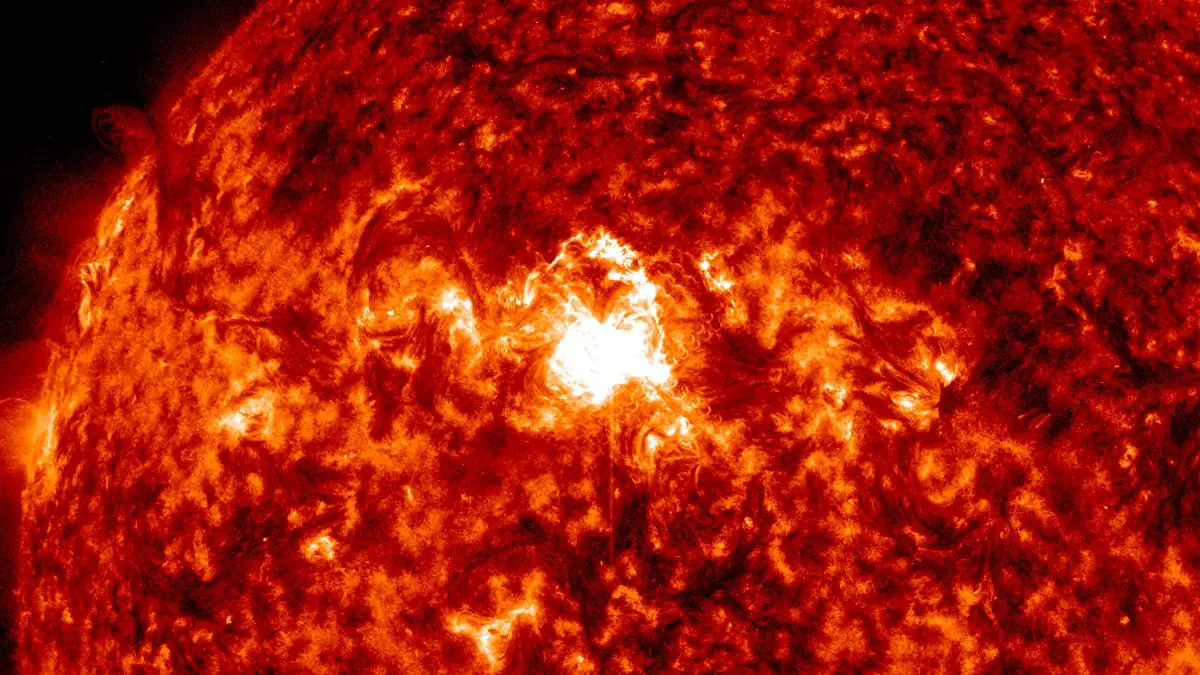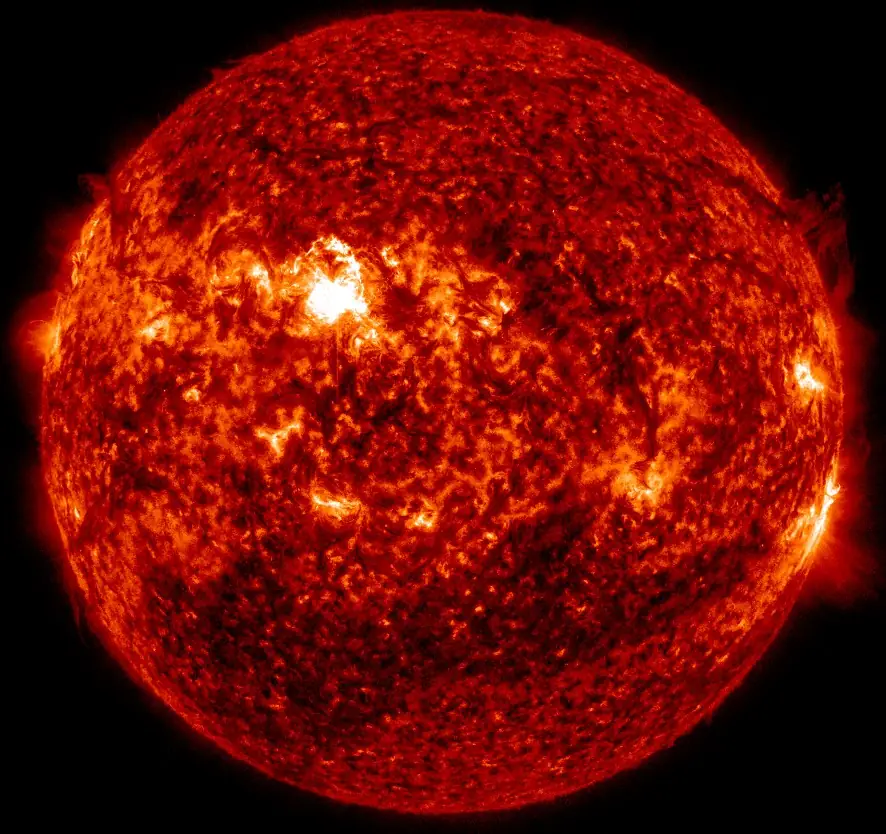Strong M8.4 solar flare erupts from AR 4114, CME produced
A strong M8.4 solar flare erupted from Active Region 4114 at 18:07 UTC on June 15, 2025. This event began at 17:45 UTC, peaked at 18:07 UTC, and ended at 18:25 UTC.

M8.4 solar flare on June 15, 2025. Credit: NASA SDO/AIA 304, Helioviewer, The Watchers
A Type IV Radio Emission was registered at 18:00 UTC, suggesting a strong coronal mass ejection (CME) was produced.
A Type II Radio Emission with an estimated velocity of 397 km/s was registered at 18:19 UTC.
In addition, a 10cm Radio Burst (tenflare) lasting 15 minutes and with peak flux of 1 800 sfu was registered from 17:55 to 18:10 UTC. This indicates that the electromagnetic burst associated with a solar flare at the 10cm wavelength was double or greater than the initial 10cm radio background. This can be indicative of significant radio noise in association with a solar flare. This noise is generally short-lived but can cause interference for sensitive receivers, including radar, GPS, and satellite communications.
Radio frequencies were forecast to be most degraded over North America at the time of the flare.



In addition to M8.4 flare from region 4114, an M2.2 flare erupted from region 4105 at 07:56 UTC today followed by an M1.9 from the same region at 10:47 UTC. A CME was associated with the M2.2 flare, originating off the west limb, and remains under analysis for any potential Earth-directed component.
Solar activity is likely to be moderate (R1-R2, Minor-Moderate) with a slight chance for X-class flares (R3-Strong) through June 17.
There are currently 8 numbered active regions on the Earth-side of the Sun. Active regions 4114, 4110, and 4116 all showed some growth over the past 24 hours.

AR 4105 (S15W71 – Beta)
AR 4107 (S15W93 – Beta)
AR 4110 (N06W58 – Beta)
AR 4111 (N14W00 – Alpha)
AR 4113 (N10E18 – Alpha)
AR 4114 (N17E26 – Beta-Gamma)
AR 4115 (N21E40 – Beta)
AR 4116 (S12E26 – Beta)
The greater than 2 MeV electron flux was at normal to moderate levels over the past 24 hours, and the greater than 10 MeV proton flux remained at background values. The greater than 2 MeV electron flux is expected to be at moderate to high levels from June 15 to 17, with a slight chance of an S1 – Minor solar radiation storm.
Solar wind parameters indicated a transition to a positive polarity coronal hole high speed stream, with speeds increasing from about 430 km/s to between 480–535 km/s, and the total field near 7 nT. Variations in solar wind speed are expected to continue, with possible increases late on June 16.
The geomagnetic field was at quiet to unsettled levels due to coronal hole high speed stream effects. Unsettled to active geomagnetic conditions are likely from June 15 to 17, with G1 – Minor storm periods likely on June 15 and 16.
I'm a dedicated researcher, journalist, and editor at The Watchers. With over 20 years of experience in the media industry, I specialize in hard science news, focusing on extreme weather, seismic and volcanic activity, space weather, and astronomy, including near-Earth objects and planetary defense strategies. You can reach me at teo /at/ watchers.news.


Commenting rules and guidelines
We value the thoughts and opinions of our readers and welcome healthy discussions on our website. In order to maintain a respectful and positive community, we ask that all commenters follow these rules.